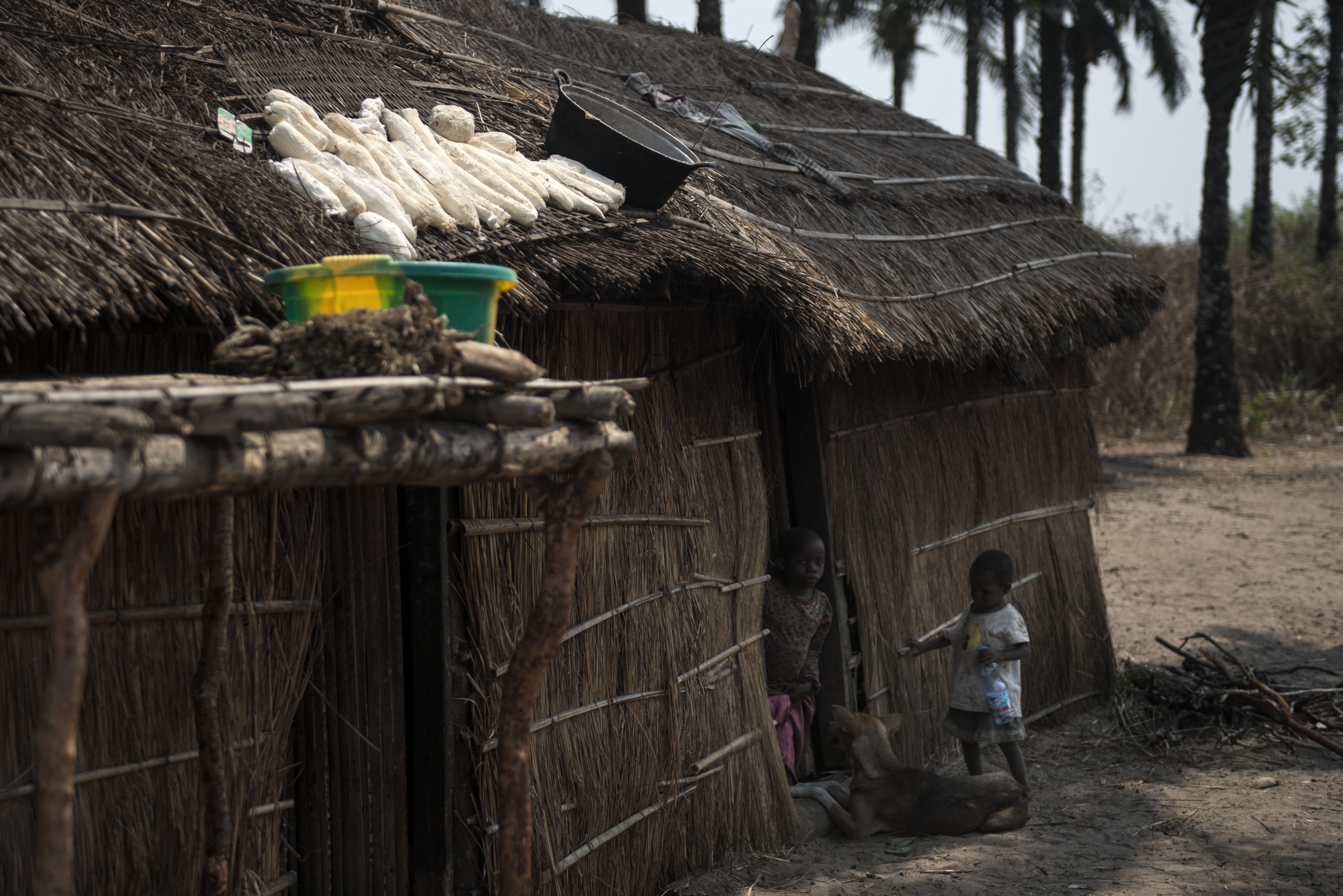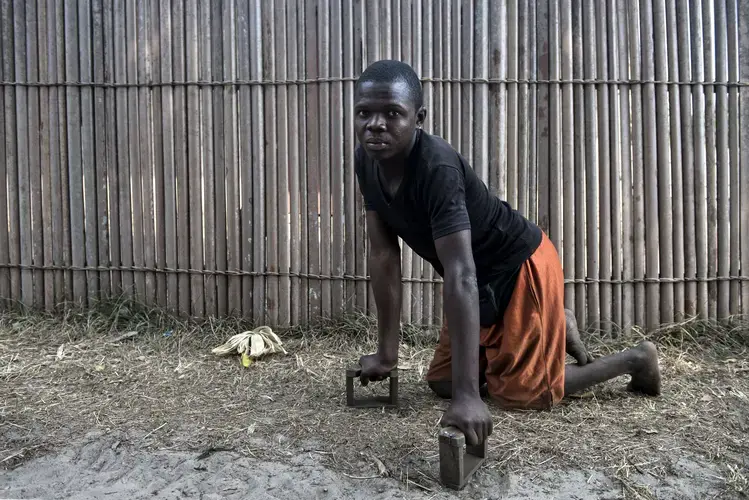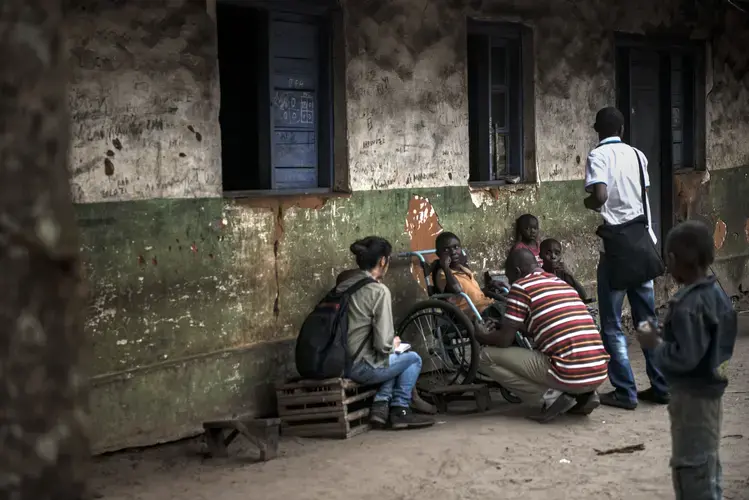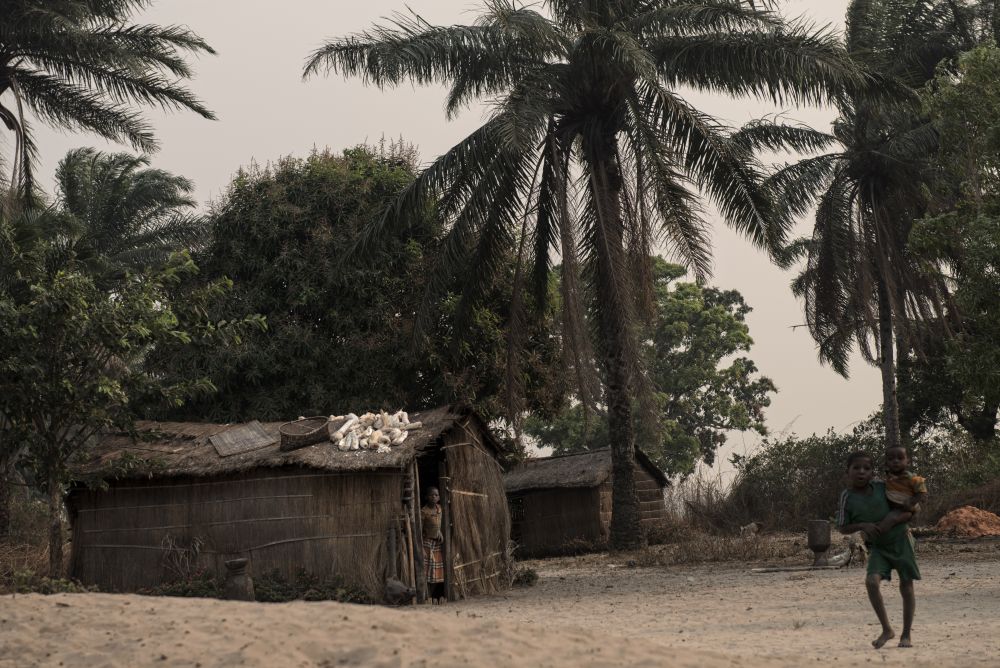
Science writer, Amy Maxmen, and I have been reporting on a series of neglected diseases across Africa. We are currently traveling to the very rural town of Kahemba, which translates to “the town of suffering” to report on a little known incurable disease known as Konzo. In the Congolese dialect Yaka, the word Konzo means "tied legs"—referring to the walk of people suffering from the paralytic disease. The ailment is caused by the consumption of insufficiently processed cassava, which naturally contains cyanide. More than 600 million people worldwide rely on cassava [yucca] as their main source of food. However, insufficiently processed cassava results in outbreaks of Konzo in thousands of children and women of childbearing age, whose diagnosis is often and dangerously mistaken for polio. Amy and I are traveling with Congolese born, U.S. researcher Dr. Desire Tshala-Katumbay who has worked extensively in the region researching the disease.

Konzo, while incurable, is caused by eating improperly prepared cassava (yucca). The first questions I asked myself when we came across the disease were, why are people still eating cassava if its known to cause the disease—and why don't people move from the region if they can’t grown another crop. As we traveled to Kahemba the answers became more apparent. The town is extremely rural. After two full days driving primarily down dried up river beds and over small trails we finally came to remote village. The majority of the small houses dotting the roadside along the trek had piles of cassava drying on the rooftops. Due to the nature of the soil the people in this region depend almost solely on cassava for their diets. Given how remote the town is and the lack of options or access to health care, the people have little to no options.

Due to the short amount of time we were given in the actual town of Kahemba we were initially concerned about finding sufficient cases of Konzo to report on. However we immediately started coming across people suffering from various degrees of severity of the disease. Walking through the streets of the town I encountered again Kakene, 18, who had been suffering from Konzo since 2002. He relied on wooden blocks to drag himself to the market or to visit friends and relatives. His case was not unique—it seems that roughly 1 in 10 people in the town hold themselves up by makeshift crutches or sit on the ground with crooked legs.









